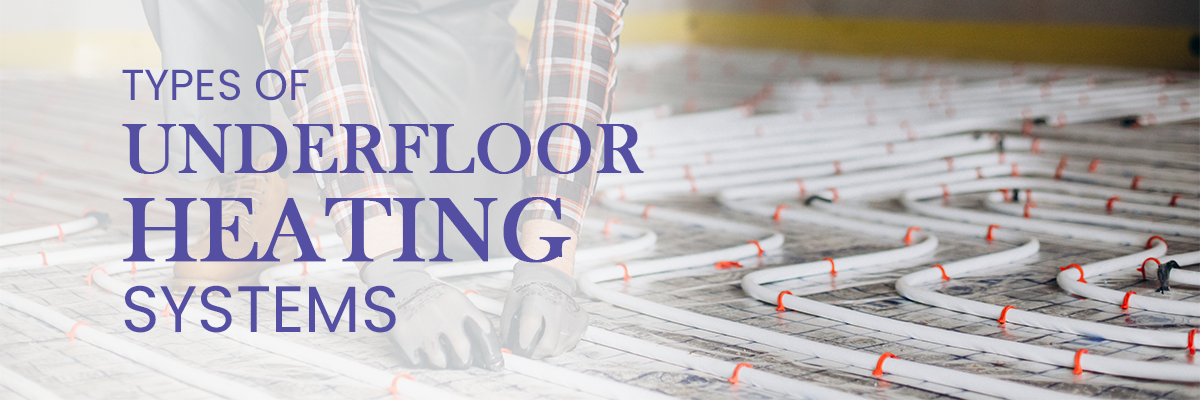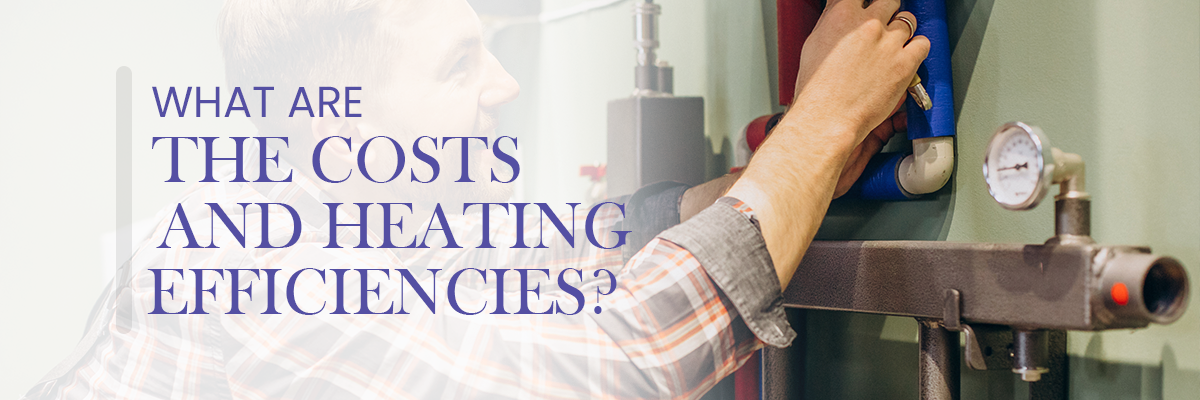- Fatima Numan
- News
- 0 likes
- 312 views
- 0 comments

Imagine a chilly winter morning, and as you step into your bathroom, the cold tiles underfoot send an unwelcome shiver down your spine.
It's a scenario many of us can relate to, highlighting the undeniable importance of effective bathroom heating accessories.
Beyond mere creature comforts, these additions transform your bathroom into a warm zone, making early mornings or late-night routines a delight rather than a daunting encounter with the cold.
In this blog, we’ll highlight the perfect heating accessories to turn your bathroom into a cozy retreat, ensuring your every visit is full of warmth and comfort.
Why is Bathroom Heating so Important?
The bathroom is unlike any other room in your house because it is much damper and smaller than other areas. Yet, it still contains significant levels of heat and humidity. Because of each of these elements, the bathroom has unique heating requirements that must be met, such as buying a separate heater that can be heated by electricity or a central heating system.
The most crucial thing to remember is that dampness might arise from an overly cool washroom. So, when choosing the ideal bathroom heating solution, keep in mind that dampness can cause mold to grow in your bathroom. Especially on the walls and tiles if you do not have the proper ventilation and heating system.
How to Heat a Cold Bathroom
We’ll now discuss some options available to help warm up cold bathrooms.
1. Electric Heaters
When winter's chill settles in, turning your bathroom into a warm and inviting space becomes essential. Electric heaters emerge as a practical and efficient solution to infuse warmth into your personal space.
Such heaters for bathrooms are often compact and designed to fit thoroughly into the limited space available. Wall-mounted or portable options offer flexibility in placement, allowing you to optimize warmth where needed.
Moreover, most electric heaters offer adjustable heat settings, for the warmth to your preference. Models with built-in thermostats enable you to maintain a consistent temperature for optimal comfort.
Electric bathroom heaters are available in a variety of designs to complement different décor styles. From sleek and modern to more classic designs, you can find a heater that seamlessly integrates into your bathroom's aesthetic.
Additionally, their compact designs, rapid heat output, and user-friendly features make them an excellent choice for those seeking instant comfort on chilly mornings or after relaxing baths.
2. Underfloor heating
Underfloor heating, a modern heating solution, offers efficiency and unparalleled comfort. This heating is a radiant system designed to warm your living spaces from the ground up.
Types of Underfloor Heating Systems
- Hydronic (Water-Based)
In this system, warm water circulates through a network of pipes installed beneath the floor. It's an energy-efficient solution often connected to the central heating system.
- Electric (Dry or Film)
Electric underfloor heating relies on a network of electric cables or heating mats beneath the floor surface. This standalone system is independent of the central heating system.
Furthermore, underfloor heating provides radiant heat, emitting warmth directly from the floor surface. This results in even heat distribution, eliminating cold spots and ensuring a consistently cozy environment.
Also, it is compatible with various floor coverings, including tiles, hardwood, laminate, and even carpets (though certain restrictions may apply). This versatility makes it suitable for diverse design preferences.

3. Electric Towel Rail
More than a mere holder for towels, an electric towel rail is a sophisticated heating solution designed to bring warmth and comfort to your bathing rituals.
An electric towel rail efficiently warms your towels, ensuring they are dry, toasty, and ready for use. Say goodbye to the discomfort of cold, damp towels, especially during colder seasons.
Beyond towel warming, many electric towel rails also serve as space heaters for the bathroom. They contribute to maintaining a cozy and comfortable temperature in the space.
Moreover, electric towel rails are typically wall-mounted, making them easy to install. They can be positioned at a convenient height, ensuring accessibility and efficient towel drying.
Many electric towel rails come with built-in timers and thermostats. It helps customize the heating duration and temperature. This not only enhances convenience but also contributes to energy conservation.
Lastly, operating an electric towel rail is simple and user-friendly. Most models feature intuitive controls, and some can even be connected to smart home systems for remote operation.
4. Ventilation Fans with Heaters
More than ordinary exhaust fans, ventilation fans offer a dual function – expelling humidity and odors while simultaneously providing a comforting stream of warmth.
These dynamic units with heaters offer a two-in-one solution, combining the benefits of effective air circulation with the comfort of an integrated heating element.
The primary role of these units is efficient moisture removal. By expelling humid air, they prevent the formation of mold and mildew.
Ventilation fans with heaters are designed for relatively easy installation. They can be installed as replacements for existing exhaust fans or incorporated into new construction or renovations.
Many units come with adjustable settings, allowing you to control both the fan speed and the heating element independently.
Moreover, built-in safety features, such as overheat protection, ensure that the unit automatically shuts off if it reaches a certain temperature. This adds an extra layer of
While providing powerful ventilation and heating, many modern units are designed for quiet operation.
Some advanced models come with remote controls or even smart home integration. This convenience allows you to adjust settings from a distance.
5. Radiant Heaters
Unlike traditional heating methods that warm the air, bathroom radiators focus on emitting infrared radiation, directly warming objects and people in their path.
There are two types of radiant heaters:
1. Column Radiators
2. Panel Radiators
Radiant heaters operate by emitting infrared radiation, a form of electromagnetic radiation that directly heats objects and surfaces in its line of sight. This focused warmth is particularly effective for spot heating.
As soon as the heater is turned on, you can feel the warmth on your skin. These operate silently, making them an ideal choice for spaces where a quiet and peaceful ambiance is desired.
Furthermore, radiant heaters come in various designs, including portable models that can be moved from room to room and fixed units that can be wall or ceiling-mounted. This versatility allows for flexible placement based on your heating needs.
Since radiant heaters don't rely on forced air circulation, they can contribute to better indoor air quality by minimizing the movement of allergens and dust particles.
Also, these are conducive to zoning, allowing you to focus warmth on specific areas or zones in your home. This targeted approach enhances energy efficiency by only heating occupied spaces.
6. Central Heating System
Unlike localized heating solutions, central heating embraces a comprehensive approach, distributing warmth through a network of interconnected components.
Central heating systems typically rely on a central furnace or boiler to generate heat. Furnaces use forced air to distribute warmth, while boilers circulate hot water or steam through pipes to radiators or underfloor heating systems.
Central heating systems are equipped with thermostats that allow precise control over the desired temperature. Thermostats regulate the heating process, maintaining a comfortable climate throughout the home.
Many central heating systems feature zoning capabilities, allowing homeowners to divide the house into distinct heating zones. This enables customized temperature control for different areas, optimizing energy efficiency.
Besides, central heating systems can often be integrated with other home climate control systems, such as central air conditioning. This creates a comprehensive solution for year-round comfort.
What are the costs and heating efficiencies?
The costs and heating efficiencies of getting a bathroom heated can vary based on the heating method and accessories chosen. Here's an overview of common heating options:
1. Electric Heaters
Costs: Electric heaters are generally affordable to purchase and install. However, operational costs can be higher, especially in regions with expensive electricity rates.
Efficiency: Electric heaters provide quick, targeted heat, but they may not be as energy-efficient for heating larger spaces. Look for models with energy-saving features.
2. Underfloor Heating
Costs: Underfloor heating systems can have higher upfront costs due to installation complexities. Operating costs can be moderate, depending on the system type.
Efficiency: Underfloor heating offers even heat distribution, ensuring a comfortable environment. It's efficient for maintaining warmth, but the initial investment can be significant.
3. Electric Towel Rail
Costs: Towel warmers are relatively affordable, and they come in electric or hydronic (water-based) options. Electric models are simpler to install.
Efficiency: While primarily designed for warming towels, towel warmers can contribute to the overall warmth of the bathroom. They are energy-efficient, especially when used selectively.
4. Ventilation Fans with Heaters
Costs: Adding a heating element to a ventilation fan is a cost-effective solution. Installation costs are generally reasonable.
Efficiency: These systems are efficient for smaller bathrooms. They serve the dual purpose of heating and ventilation, reducing moisture-related issues.
5. Radiant Heaters
Costs: Radiant heaters, whether wall-mounted or ceiling-mounted, have moderate upfront costs. Operating costs can vary based on the power source.
Efficiency: Radiant heaters emit infrared radiation, heating objects directly. They are energy-efficient for spot heating but might take longer to warm larger spaces.
6. Central Heating Systems
Costs: Integrating the bathroom into a central heating system can have higher upfront costs, especially if modifications are needed. Operating costs are usually moderate.
Efficiency: Central heating provides consistent warmth throughout the house. While efficient, it may take longer to warm up the bathroom compared to targeted heating solutions.

Tips for Cost Efficiency
- Consider energy-efficient models with programmable thermostats to control usage.
- Ensure proper insulation to retain heat and reduce energy consumption.
- Use heating accessories selectively, focusing on high-traffic times.
- Explore renewable energy sources for heating, such as solar-powered systems.
Colors affect Temperature
Even though it's common knowledge that darker colors reflect heat better, painting your bathroom walls black won't make it any warmer. Rather than painting your bathroom walls a stark white or magnolia, think about toning them down a little.
Choosing grey paint for your bathroom is a fantastic example of this, as it provides a neutral color palette. As an alternative, you might want to think about using more abstract tones like burnt orange or autumnal rouge if you're feeling daring.
What is a BTU Rating?
BTU stands for British Thermal Unit. In the context of heating, the BTU rating is commonly used to measure the heating capacity of appliances, such as furnaces, boilers, and space heaters.
It indicates how much heat the appliance can produce in an hour. The higher the BTU rating, the more heat the appliance can generate, and the larger the space it can effectively heat.
When selecting heating appliances or systems, it's important to match the BTU rating to the size of the space you intend to heat.
So, choosing an appliance with too low of a BTU rating for a large space may result in inadequate heating, while selecting one with too high of a BTU rating for a small space can lead to inefficiency and excessive energy consumption.
Takeaway
Ultimately, the best choice depends on your preferences, budget, and the size of your bathroom. A combination of heating accessories, such as a towel warmer for comfort and a ventilation fan with a heater for efficient heating, might offer a balanced solution.
Always consider the energy efficiency ratings and long-term operational costs when making your decision.
At Mega Bathrooms, you’ll find our full range of heating accessories perfect for any bathroom. If you’re looking for more advice to update your bathroom check out our blog posts on the best bathroom accessories to add a lot of comfort to your space.













 5 Star Customer Reviews
5 Star Customer Reviews 


Comments (0)